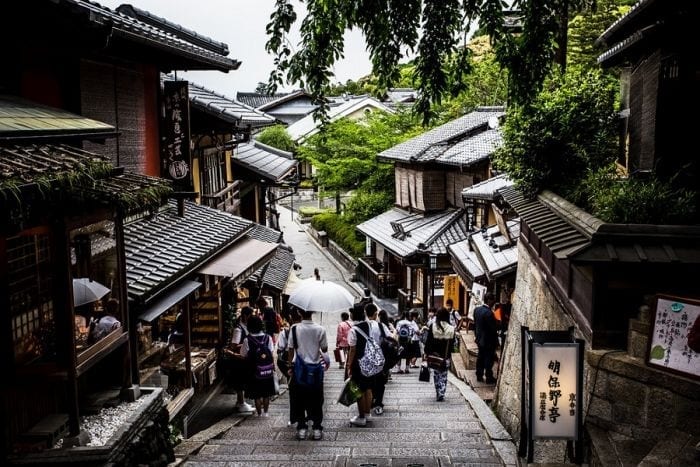From the outside, it is still an historic townhouse, a wooden dwelling, machiya, a type of popular building meant for merchants and artisans, a modest residence once common in Kyoto. Urbanization has swallowed up many of these traditional dwellings in the last 20 years, due partly to the high cost of maintaining them. In one of these machiyas, Starbucks has opened its first location in a traditional Japanese setting, complete with tatami, cushions and antique furnishings.
The celebrated American coffee chain has more than 1,100 sites in Japan, but all the others are in line with the company’s standard international architectural style, similar to other Starbucks, whether in Chicago or Istanbul, Tokyo or Paris. Next year one will open in Italy, in Piazza Cordusio in Milano. Kyoto’s new café, though, is in an area near the city’s temples, the celebrated Nineizaka, one of the best preserved streets in the Higashiyama district. The building dates back to the middle of the 17thcentury, the Edo period. The renovation of the space, which was a teahouse until 2005, paid careful attention to pre-existing elements in order to showcase the story of the building and the city’s traditions. The characteristic fabric curtain, the noren, hangs at the doorway, as it does in many popular Japanese businesses, although here it is decorated with Starbucks’ distinctive siren. Inside, the counter space is inspired by Asian lanterns, their form, materials and colors.
Open-air areas, Zen gardens and stone water basins, tsukubai, are nods to classic Japanese decor. Upstairs, most seating is on tatami mats, shoes come off, and besides coffee, matcha pudding and green tea are served. There are, however, benches and a few rooms of tables and chairs for those who are unable or unwilling to sit on the floor.
by Livia Montagnoli



 US tariffs: here are the Italian wines most at risk, from Pinot Grigio to Chianti Classico
US tariffs: here are the Italian wines most at risk, from Pinot Grigio to Chianti Classico "With U.S. tariffs, buffalo mozzarella will cost almost double. We're ruined." The outburst of an Italian chef in Miami
"With U.S. tariffs, buffalo mozzarella will cost almost double. We're ruined." The outburst of an Italian chef in Miami "With US tariffs, extremely high risk for Italian wine: strike deals with buyers immediately to absorb extra costs." UIV’s proposal
"With US tariffs, extremely high risk for Italian wine: strike deals with buyers immediately to absorb extra costs." UIV’s proposal Meloni: "Tariffs? If necessary, there will be consequences. Heavy impact on agri-food sector"
Meloni: "Tariffs? If necessary, there will be consequences. Heavy impact on agri-food sector" The Government honours the greats of Italian cuisine, from Bottura to Pepe. Massari: "Thank you, Meloni, the only one who listened to us"
The Government honours the greats of Italian cuisine, from Bottura to Pepe. Massari: "Thank you, Meloni, the only one who listened to us"






